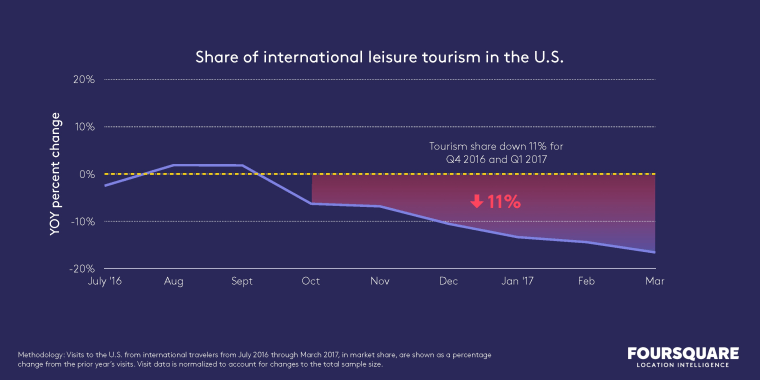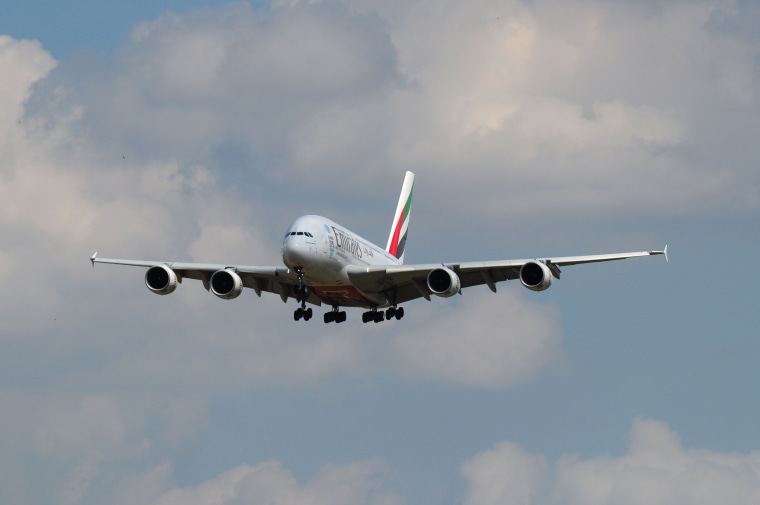Travel to the United States has dropped as much as 16 percent in the months since President Donald Trump took office — and there's no sign of recovery, according to a new study.
Analyzing data gathered from over 50 million mobile users across the world, location intelligence company Foursquare found that America’s share of international tourism to leisure locations has declined by an average of 11 percent since October 2016, with a low of 16 percent in March.

California, in particular Los Angeles and San Diego, saw the biggest decrease in international visitors. While both cities saw strong year-over-year gains in fall 2016, Foursquare found that international tourism dropped sharply in the first quarter of 2017.
And while it seems positive that business trip activity is up in the U.S. by about 3 percent (as a share of international traveler global activity), Foursquare notes that this trend is not as high as elsewhere in the world, where year over year trends are closer to 10 percent.
Tourism Lifts All Boats
It’s not just hotels and airlines that will be hurt by big dips in foreign visitors to the United States; retailers are sure to feel the pinch as well.
Foursquare’s data shows the drop in international tourism to the U.S. is causing an ‘opportunity cost’ of about 1.2 percent in total visits to U.S. shops, restaurants and attractions.
And while that doesn’t seem like much, it can mean an additional 1 to 2 percent year-over-year sales hit to U.S. retailers “already operating on thin margins and besieged by competition from Amazon, e-commerce as a whole, and a generally competitive and ‘over-stored’ economy,” notes Foursquare.
Related: With Big-Name Retailers Failing, Is There Any Hope for Mom and Pop Stores?
While the strength of the U.S. dollar may be having causing some foreign visitors to decide to vacation elsewhere, the Trump administration’s policies on immigration and tourism visas and the current ban on a broad range of electronic devices in the cabins of U.S.-bound aircraft from certain countries certainly isn’t making the United States seem tourist friendly right now.
Nor is the talk of expanding the electronics ban to aircraft heading to the U.S. from Europe and other countries, or the fact that President Trump’s federal budget document proposes to eliminate the Brand USA tourism marketing agency.
"With all that's going on in the world, unilaterally disarming the marketing of the U.S. as a travel destination would be to surrender market share at the worst possible time,” said U.S. Travel Association President and CEO Roger Dow in a statement.
With international travel spending supporting millions of American jobs, Dow said he was struggling to understand how cutting Brand USA even squares with the Trump’s administration's stated priorities.
For all the handwringing, though, there may be a silver lining in the turndown of foreign visitors to the United States: smaller crowds and better deals to anyone who does plan a U.S. vacation.
“That's if restaurants, attractions, and other leisure categories start feeling the pinch and decide to add new promotions into the mix,” said Foursquare CEO Jeff Glueck.
